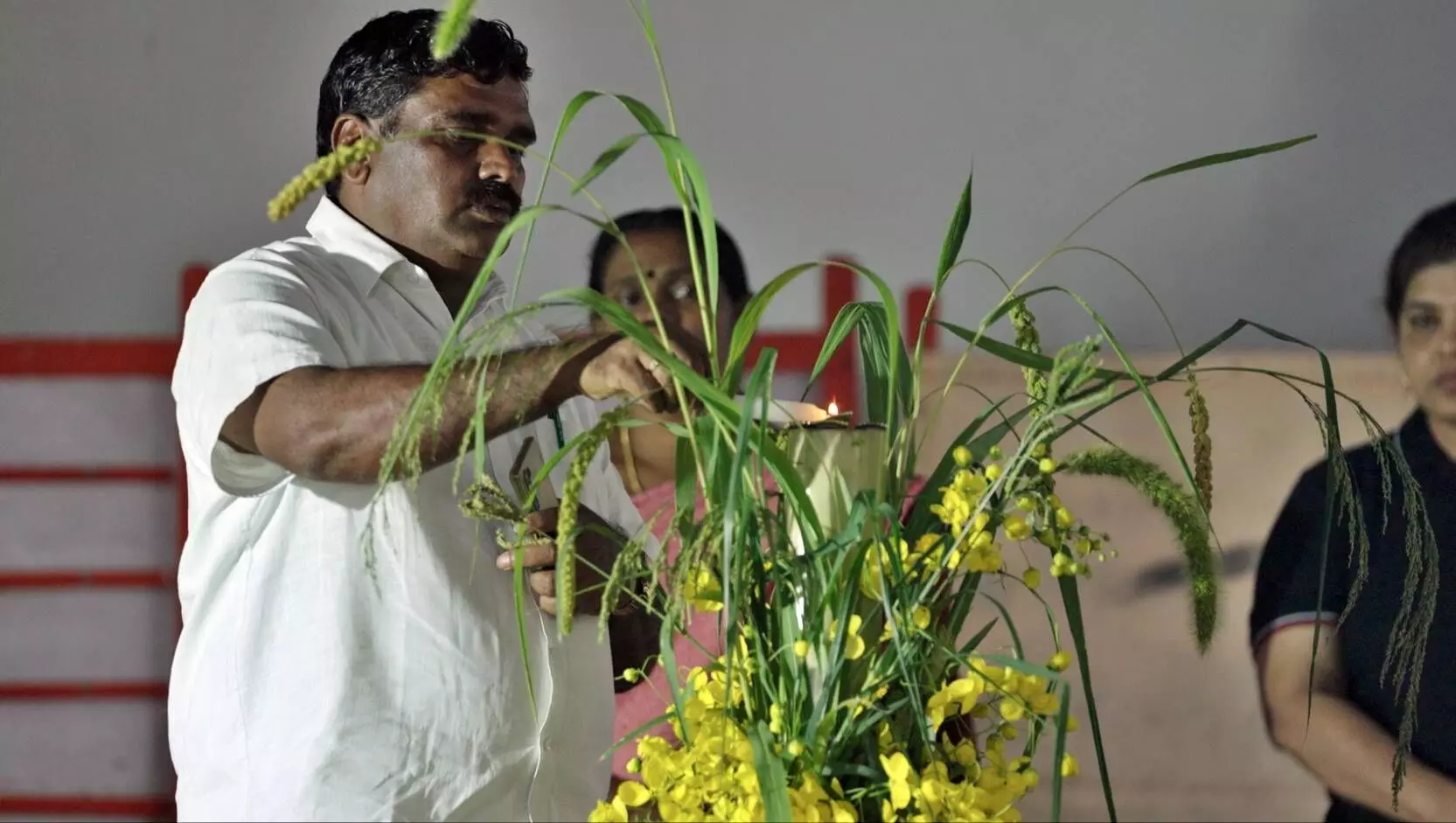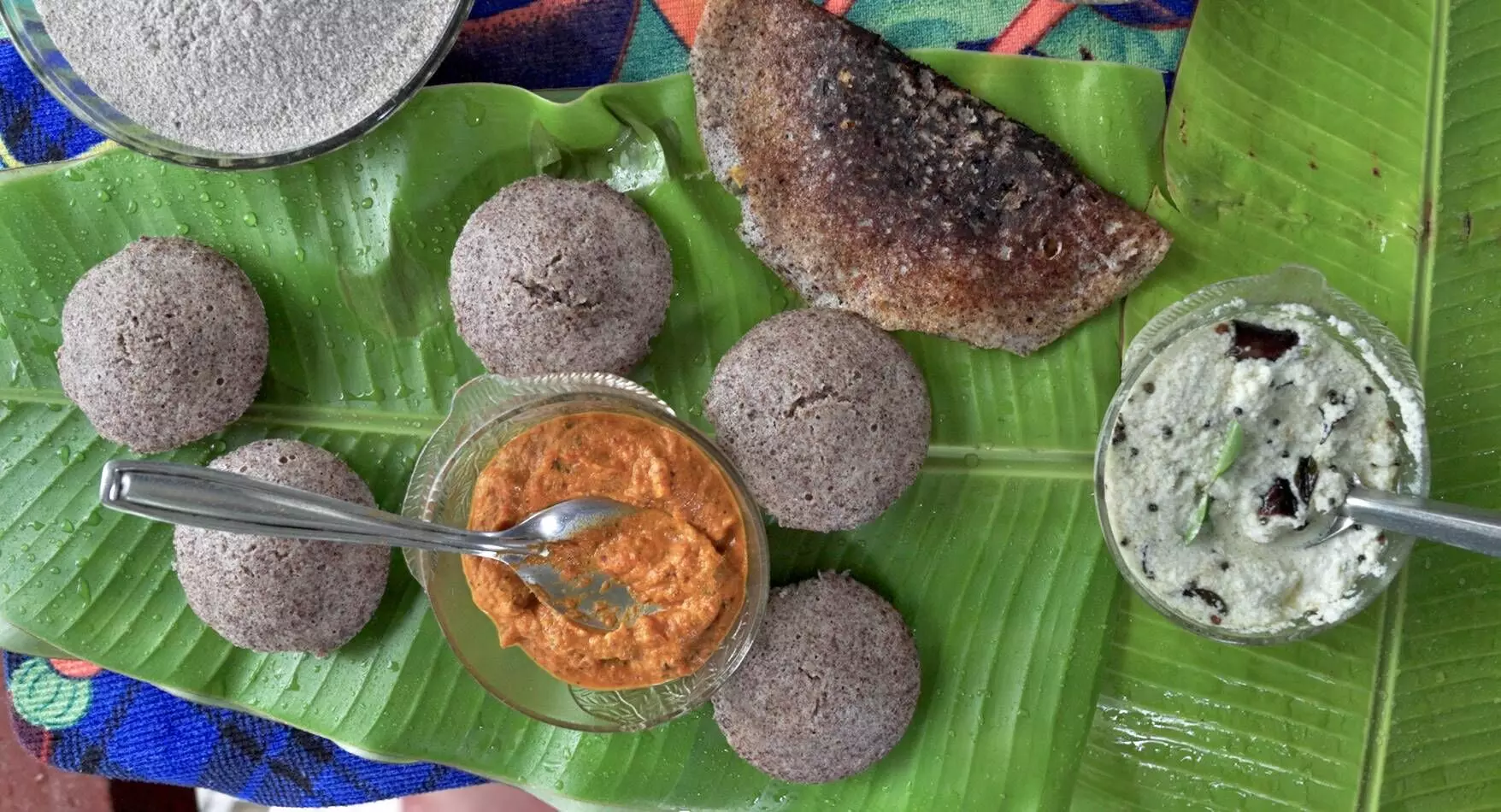Kanthalloor (Idukki), Kerala
The heavens opened up and the rain created a din on the asbestos roof of the school hall where the farmers were gathered. Undeterred, young men and women danced to the beat of drums for the audience at the chaupal (village meeting) that was underway that afternoon of April 29.
It was the first of three chaupals conducted as part of Lenovo’s Work for Humankind initiative, in the hill town of Kanthalloor, lying in the shadow of its more glamorous cousin Munnar in Kerala. Farmers had congregated there to participate in the launch of Lenovo’s unique project — to revive millet-growing in the area.
Lenovo aims to improve accessibility, increase awareness around the benefits of millet farming, and enhance local farming knowledge and best practices. Through its project, it aims to build market linkages to transform the millet food system into a profitable and sustainable model that will support rural livelihoods in Kanthalloor with its population of about 10,000. Twenty five farmers from the indigenous communities in the panchayat have been selected to be part of the pilot project, 16 of whom are women. They are early adopters who are spearheading the revival of millet cultivation in Kanthalloor.

Farmers attending the chaupal for an interaction based on the issue of the revival of millets.
“The project is to reach technology in useful ways to the underserved, and support humankind,” explained Pratima Harite, Head, Philanthropy, Asia Pacific, for Lenovo.
“The Government of India has done plenty for agriculture by way of welfare schemes, farmer subsidies, weather updates, and so on. But, a lot of that information is digitised, and in many places, the farmers have no access to it. We want to bridge that gap,” Harite told Gaon Connection.
On reviving millets
Jayamma, a 40-year-old indigenous farmer hoped the project would allow her to continue growing what her forefathers had grown.
“We have grown millets for hundreds of years. But, because processing it is hard work, and because we get wheat and paddy in the rations, our consumption of it has gone down,” she told Gaon Connection.
PT Mohandas, Kanthalloor’s 46-year-old Panchayat President, said he grew up eating millets. “I am a farmer and my family grew, processed and cooked millets at home. But, they have almost disappeared from our lives,” Mohandas, told Gaon Connection.
He couldn’t be happier about the project. “There are eight villages and nine settlements of indigenous communities in the 13 wards of the Kanthalloor panchayat. And, the 25 farmers who have signed up for the pilot project are all from indigenous communities,” Mohandas said. The farmers come mostly from five wards, and belong to the ancient Muthuvan and the malai or Hill Pulaya tribes.

The challenge was to motivate farmers to take up millet cultivation with renewed vigour.
The indigenous seeds of millets have been distributed, and the sowing has begun. The harvest should be ready end July.
Baseline survey
Lenovo, along with the Bengaluru based non-profit, Dream India Network, that works extensively in the area of sustainable livelihoods, along with the students of IHRD College of Applied Science and St Teresa’s College, Kochi, first conducted a baseline survey in January There were 227 farmer households that were surveyed.
Harite shared the findings of the survey with Gaon Connection.
- Of the 18 odd varieties of millets that were grown in Kanthalloor, 30 years ago, barely a handful survive.
- The millets are now grown mostly for the farmers’ personal consumption. Even that is becoming less
- Farmers have no way of marketing them and that is why they are reluctant to grow the millets on a larger scale.
The challenge was to motivate farmers to take up millet cultivation with renewed vigour, said Dr Saju Parackal, CEO, Dream India Network.
“We know the farmers have the agricultural know-how, and using technology to leverage their cultivation can give them the boost they need,” he said. They will start with growing finger millets (ragi, in Tamil). The other millets that will eventually be grown are Foxtail, Barnyard, Little Millet, Kodo and Proso millets.

In order to create more avenues, there are plans to use the locally grown millets in the more than 250 homestays and resorts in Kanthalloor.
“Traditionally millets are organic. Not only can growing them on a larger scale provide better income for the farmers, millets will improve the health of the population at large,” Mohandas said.
Besides, millets are sustainable, as they don’t need too much water, they have a short crop cycle and most importantly they are pest-resistant. “They are extremely healthy and nutritious too. All we need is help with the marketing. Who knows, Kanthalloor millets could get a GI tag and become famous,” Mohandas said, and hoped other panchayats would follow suit.
Technology lab
About 10 student volunteers of IHRD College of Applied Sciences in Kanthalloor, will facilitate the process of marrying technology to farming, with the help of Lenovo, Harite said.
“Lenovo has set up a technology lab ( Lenovo Digital Center for Kanthalloor Millets) at IHRD where students will help farmers access information about government subsidies, schemes etc, and tell them about new methods of farming that have developed over the years and about ways to combat climate change that is affecting farmers everywhere. This could be of immense value to them,” she explained.

Through its project, Lenovo aims to build market linkages to transform the millet food system into a profitable and sustainable model that will support rural livelihoods in Kanthalloor with its population of about 10,000.
The students are from Kanthalloor’s farming communities. They will be the bridge between technology and traditional wisdom, Harite said.
A business plan for Kanthalloor millets
“The millets have a crop cycle from sowing to harvesting of about two and a half to three months. We will enable setting up a processing plant in Kanthanalloor where the millets can be turned into easy-to-use products,” Harite said.
Lenovo has tied up with millet entrepreneur Mini Srinivasan who operates a business in Coimbatore, Tamil Nadu and will help with the market linkage part of the project. She makes products entirely out of millets.
“There are many avenues for the use of millets. They can be made into ready-to-use products that have a ready market, I know,” Srinivasan told Gaon Connection. “Millets can be processed into powders, flakes, batters and noodles which will do well,” she said.

In order to create more avenues, there are plans to use the locally grown millets in the more than 250 homestays and resorts in Kanthalloor. The target is to reach out to at least 50 homestays.
“Why can’t we serve millets to guests who visit Kanthalloor, as a speciality of this place,” asked PT Thankachan, president of the Kanthalloor Homestays & Resorts Association. “Millets can become an identity of this place,” he told Gaon Connection.
The farmers are willing enough. “We know everything there is to know about growing millets. But till now, all that effort that goes into growing it, was not worth it. After we keep aside what we need for our own consumption, the rest of it goes to waste. If we can sell that, we could have more income,” Radhakrishnan, another of the early adopters, told Gaon Connection.
Calcium-rich ragi, a perfect meal for Anganwadis
The project works closely with Kudumbashree, a poverty eradication and women empowerment programme implemented by the State Poverty Eradication Mission (SPEM) of the Government of Kerala. The Kudumbashree network has a membership of 45,85,677 women.
“We will be working with Kudumbashree and trying to strengthen the millet value chain through them as well. Also, through the gram panchayat, one could look at the possibility of serving children of the Anganwadis millets as part of their meals,” Harite said.
2023 is the International Year of Millets and the Lenovo Work for Humankind Project hopes to give millets a fillip by working with two target groups, the farmers and the technologists to create a sustainable case for the district. “But at the end of the day, the ownership of the project lies with the community,” she said.




















